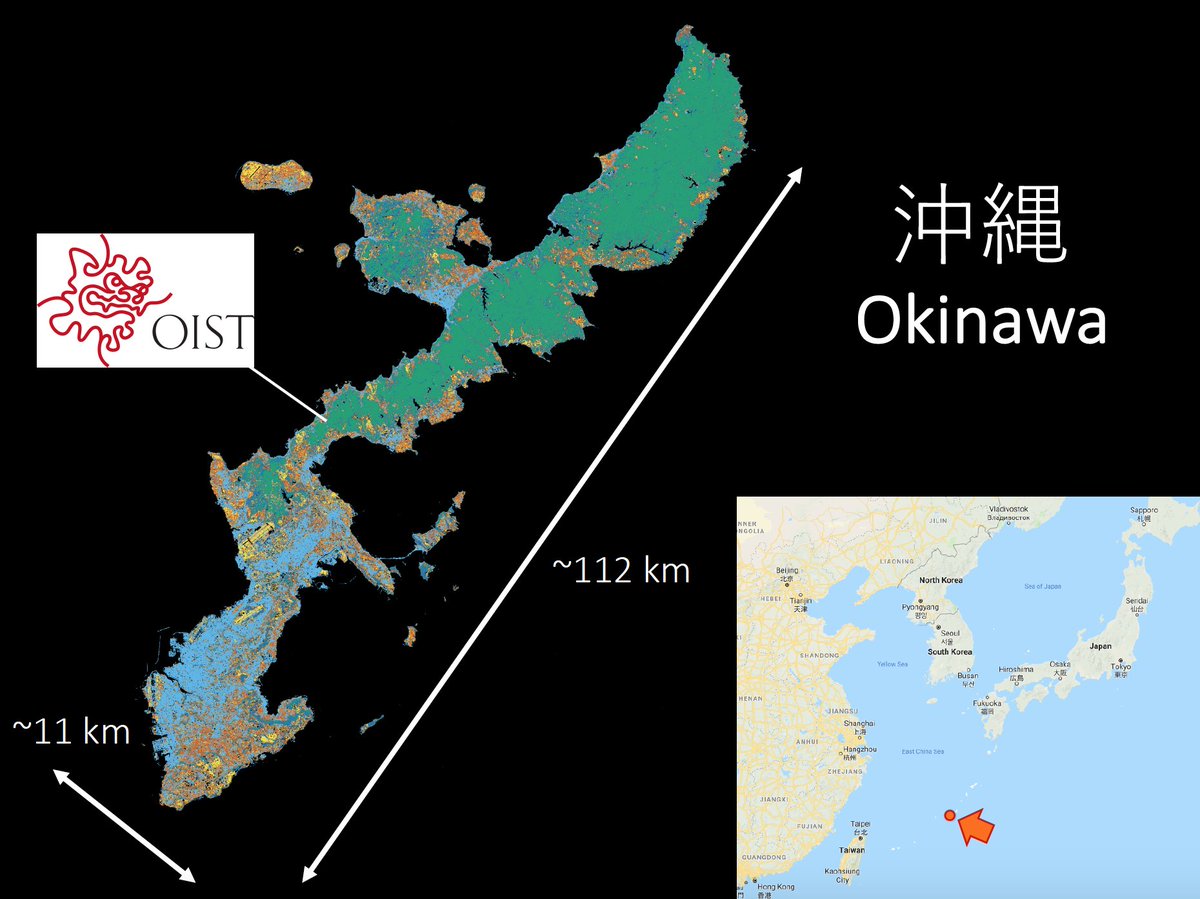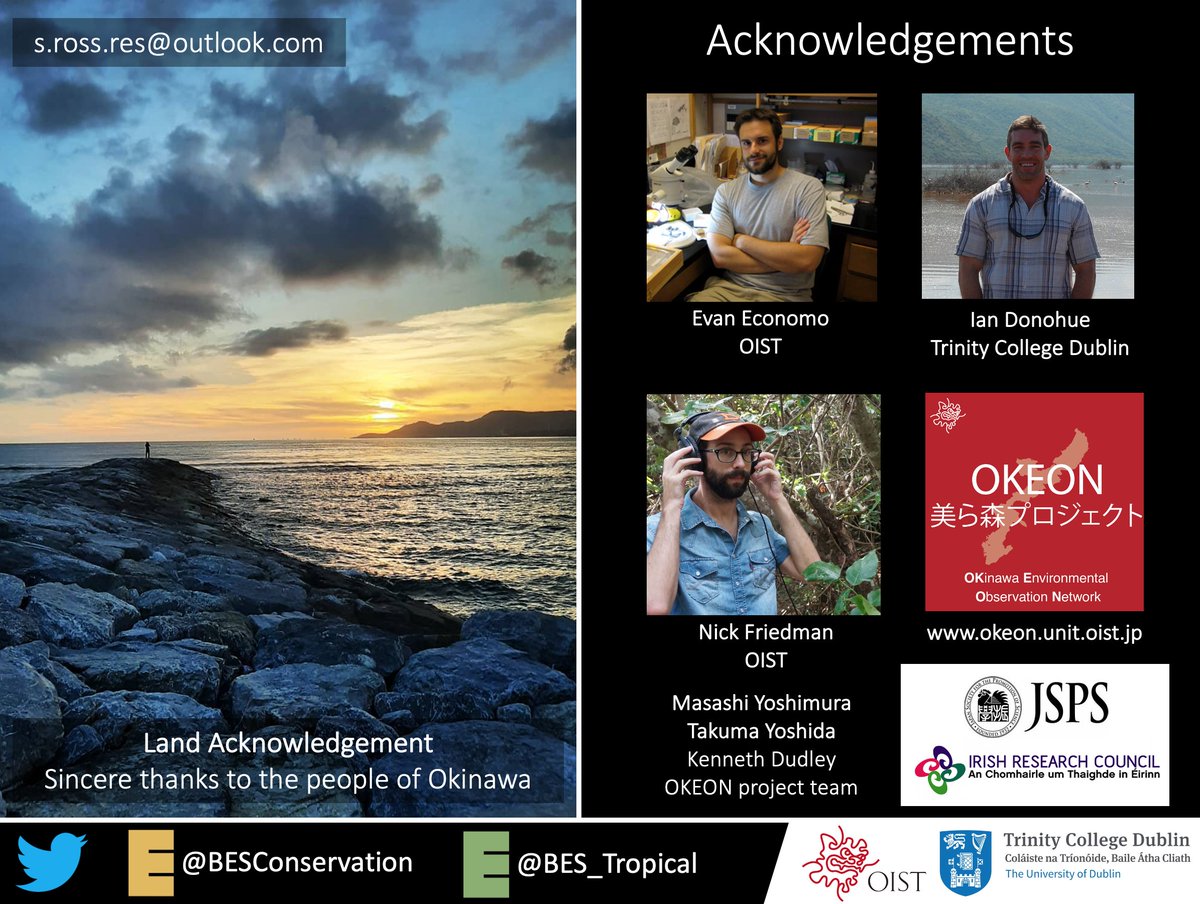
1/5 Hi #TropiCon20 My work uses acoustic monitoring to understand the dynamics of nature. Recording the sounds produced in ecosystems (soundscapes) can reveal important information about animals and their habitats. This is a @TCDZoology & @EconomoLab collaboration, part of my PhD
2 #TropiCon20 The @OkeonChuramori Project monitors ecosystems in near real-time across the subtropical island of Okinawa. Led by Nick Friedman, we use @WildlifeAcoust SM4 recorders to study soundscape change along Okinawa's strong urban-rural gradient. And we have a LOT of data. 







3 #TropiCon20 Acoustic indices are used to rapidly and objectively summarise the soundscape and as indicators of biodiversity. But difficult sonic conditions (wind/rain, human activity, insect noise) could decouple acoustic indices from the biodiversity they supposedly represent.
4 #TropiCon20 We tested acoustic index relationships with species richness by manually counting species in ~230-hrs of @OkeonChuramori recordings. Most were less correlated with richness under human noise and geophony, and cicadas particularly masked the signals of other animals.
5 #TropiCon20 Overall, we suggest targeted use and careful interpretation of acoustic indices when aiming to estimate biodiversity in challenging sonic conditions. Our #EcologicalIndicators paper (out soon) includes specific suggestions. Thanks for following along! Any questions? 





And of course, thanks to all the people, funders etc. who made this work possible, and to @BESConservation @BES_Tropical for hosting me! @donohueian @EvanEconomo @MaleAntsProject Nick Friedman @OkeonChuramori Takuma Yoshida @OISTedu @IrishResearch @WildlifeAcoust @TCDZoology 🇮🇪🇯🇵
@threadreaderapp unroll
• • •
Missing some Tweet in this thread? You can try to
force a refresh


